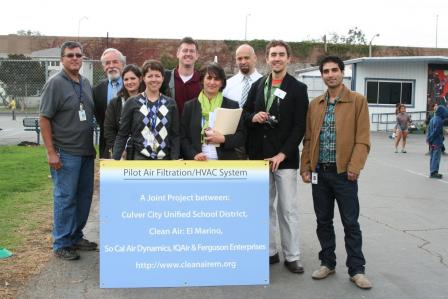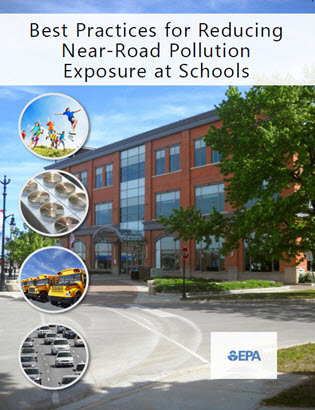Best Practices for Reducing Near-Road Air Pollution Exposure at Schools
Why It's Important
- Motor vehicles are a major source of air pollution in the United States. Research suggests that particulate matter (PM) from vehicles, notably heavy-duty diesel vehicles, may be especially harmful.
- While vehicle emissions have decreased over the past several decades due to EPA’s emissions standards for cars and trucks, schools may still be located in areas where air pollution levels are elevated.
- Motor vehicle pollutant concentrations tend to be higher closer to the road, with the highest levels generally within the first 500 feet of a roadway and reaching background levels within approximately 2,000 feet of a roadway, depending on the pollutant, time of day and surrounding terrain.
- Nearly 17,000 schools in rural and urban areas across the U.S. are located near heavily traveled roads.
- Exposure to traffic-related air pollution has been linked to a variety of short- and long-term health effects.
- Children are particularly sensitive to air pollution, because their respiratory systems are not fully developed, they are more active, and they breathe more rapidly than adults. Children also are more likely than adults to have asthma.
What You Can Do
- Several strategies are being used by communities and schools across the country to reduce traffic-related pollution exposure, many of which can be applied in schools. For example:
- Upgrade filtration systems used in classrooms.
- Locate air intakes away from pollution sources.
- Provide training to school staff and students on indoor air quality and ventilation.
- Avoid strenuous activities, such as physical education class and sports, during peak traffic times.
- Reduce car and bus idling, upgrade bus fleets, and encourage active transportation like walking and biking to school.
- Consider improvements to site layout, such as locating classrooms further from the roadway.
- Consider installation of solid and/or vegetative barriers.
- See EPA's Best Practices for Reducing Near-Road Air Pollution Exposure at Schools for more information.
Best Practices for Reducing Near-Road Air Pollution Exposure at Schools
This document can be used by schools to reduce exposure to traffic-related air pollution.
Clean Air El Marino Case Study
 Find out how the El Marino Language School worked to mitigate nearby traffic pollution and improve its air quality at the Clean Air: El Marino website Exit.
Find out how the El Marino Language School worked to mitigate nearby traffic pollution and improve its air quality at the Clean Air: El Marino website Exit.
Find More From...
EPA and Federal Partners
- Near Roadway Air Pollution and Health Frequent Questions
- General information about indoor air quality
- Creating healthy indoor environments in schools
- Energy Savings Plus Health: Indoor Air Quality Guidelines for School Building Upgrades
- EPA School Siting Guidelines
- EPA Clean School Bus Program
- Near-Road Vegetative Barriers Workshop Materials (PDF) (5pp, 293KB)
- EPA School Flag Program
Regional, State and Local Resources
The following links exit the site Exit
- California Air Resources Board, Air Quality and Land Use Handbook (PDF) (109pp, 1.46MB)
- South Coast Air Quality Management District, Air Quality Issues in School Site Selection Guidance Document (PDF) (82pp, 730KB)
- South Coast Air Quality Management District, Near Road Mitigation Measures and Technology Forum Materials
- California Department of Education, School Site Selection and Approval Guide
- Los Angeles Unified School District, Distance Criteria for School Siting (PDF) (6pp, 28.9KB)
- ASHRAE Standard 62.1-2013, Ventilation for Acceptable Indoor Air Quality, 2013
- ASHRAE Indoor Air Quality Guide: Best Practices for Design, Construction, and Commissioning, 2009

